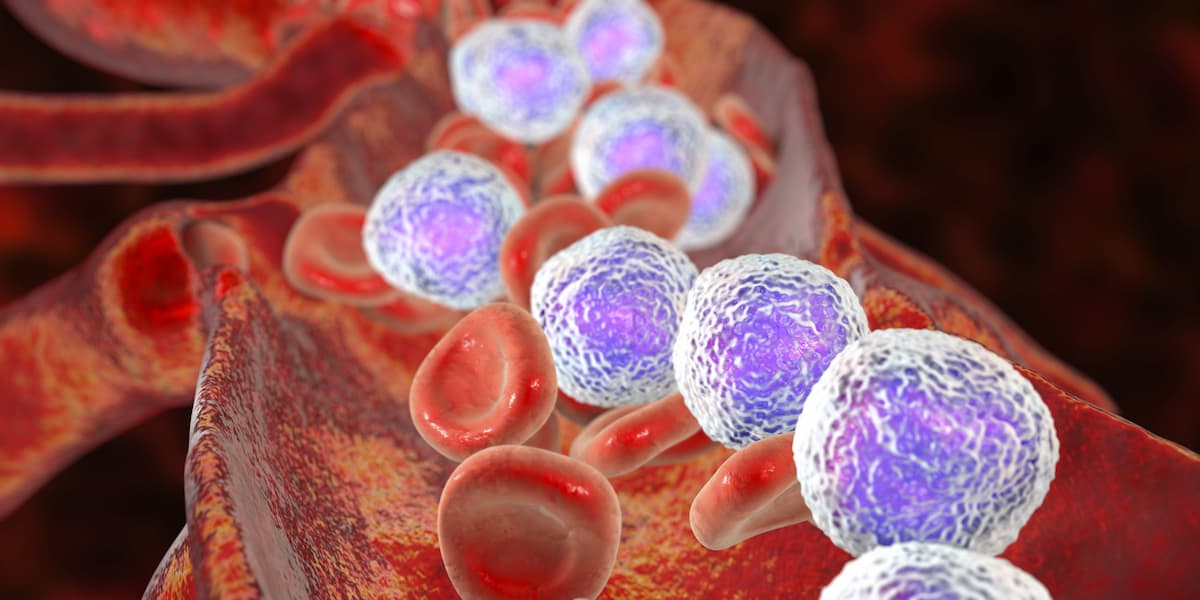Venetoclax Combo Achieves Mixed Results in Relapsed/Refractory Multiple Myeloma
Venetoclax with bortezomib and dexamethasone led to a median PFS of 23.4 months compared with 11.4 months with placebo in patients with R/R MM.
Venetoclax with bortezomib and dexamethasone led to a median PFS of 23.4 months compared with 11.4 months with placebo in patients with R/R MM.

Venetoclax with bortezomib (Velcade) and dexamethasone did not improve overall survival (OS), though it did improve progression-free survival (PFS) compared with placebo with bortezomib and dexamethasone in patients with relapsed/refractory multiple myeloma, according to the final OS analysis of the phase 3 BELLINI trial (NCT02755597) published in The Lancet.
With a median follow-up of 45.6 months (IQR, 43.6-48.3), 40% of the venetoclax group and 37% of the placebo group had died; the median OS was not reached (NR; 95% CI, 44.0-not estimable [NE]) with the venetoclax combination compared with NR (95% CI, 44.0-NE) with placebo (HR, 1.19; 95% CI, 0.80-1.77; P = .39).
In a post hoc analysis, in the subgroup of patients without t(11;14) with low BCL2 expression, the median OS was 46.4 months (95% CI, 30.4-NE) with venetoclax compared with NR (95% CI, 40.2-NE) with placebo (HR, 1.38; 95% CI, 0.84-2.27; P = .21).
The median PFS per investigator assessment was 23.4 months (95% CI, 16.2-26.4) with venetoclax compared with 11.4 months (95% CI, 9.5-14.6) with placebo (HR, 0.58; 95% CI, 0.43-0.78; P = .00026). For patients with t(11;14)-positive status, the median PFS was 36.8 months (95% CI, 20.8-NE) with venetoclax vs 9.3 months (95% CI, 2.8-15.0) with placebo (HR, 0.17; 95% CI, 0.06-0.45; P = .00041).
Post hoc analyses revealed that in the subgroup with high BCL2 expression, the median PFS was 30.1 months (95% CI, 23.5-42.1) with venetoclax compared with 9.9 months (95% CI, 8.6-12.6) with placebo (HR, 0.36; 95% CI, 0.21-0.61; P = .00014); in the t(11;14)-positive and/or high BCL2 subgroup, the median PFS was 34.3 months (95% CI, 23.8-42.1) vs 9.9 months (95% CI, 8.6-12.6), respectively (HR, 0.32; 95% CI, 0.20-0.53; P < .0001).
The investigator-assessed overall response rate (ORR) was 84% with venetoclax compared with 70% with placebo (P = .0088); the investigator-assessed duration of response was 26.7 months (95% CI, 22.6-35.9) vs 12.8 months (95% CI, 9.1-15.2), respectively (HR, 0.514; 95% CI, 0.364-0.727; P = .00012). The minimal residual disease–negative rate was 15% vs 2%, respectively (P = .0012). The time to progression was 24.7 months (95% CI, 20.4-31.2) with venetoclax vs 11.4 months (95% CI, 9.5-14.8) with placebo (HR, 0.530; 95% CI, 0.391-0.717; P < .0001).
Further, patient-reported outcomes revealed disease symptom deterioration occurred in 48% of the venetoclax group and 58% of the placebo group; the median time to deterioration was 12.5 months (95% CI, 7.9-20.6) vs 4.3 months (95% CI, 4.2-7.9), respectively (HR, 0.65; 95% CI, 0.46-0.91; P = .013).
“The final OS analysis from the BELLINI study further showed, in post hoc analyses, possible benefits of venetoclax plus bortezomib and dexamethasone in relapsed/refractory multiple myeloma with t(11;14) and/or BCL2-high [expression], with a manageable safety profile,” wrote lead study author Shaji Kumar, MD, consultant, professor, and researcher at Mayo Clinic in Rochester, Minnesota, and coauthors in the paper. “Results of this study support a biomarker-driven approach with venetoclax in relapsed or refractory multiple myeloma.”
A total of 291 patients were enrolled and randomly assigned, in a 2:1 ratio, to receive either venetoclax at 800 mg daily (n = 194) or placebo (n = 97). Patients also received 1.3 mg/m2 of bortezomib subcutaneously or intravenously on days 1, 4, 8, and 11 and 20 mg of dexamethasone on days 1, 2, 4, 5, 8, 9, 11, and 12, in 21-day cycles for cycles 1 to 8; for cycles 9 and beyond, treatment was continued in 35-day cycles where patients received venetoclax or placebo combined with bortezomib on days 1, 8, 15, and 22 and dexamethasone on days 1, 2, 8, 9, 15, 16, 22, and 23.
The trial enrolled patients who were 18 years or older with relapsed/refractory multiple myeloma, measurable disease, and 1 to 3 prior lines of therapy; patients also had an ECOG performance status of 2 or less and were naive or previously exposed to but not refractory to proteasome inhibitors, with treatment concluded within 60 days of the first study drug dose.
The primary end point was PFS. Secondary end points included ORR, rate of very good partial response or better, OS, and patient-reported outcomes.
Patient-reported outcomes revealed disease symptom deterioration occurred in 48% of the venetoclax group and 58% of the placebo group; the median time to deterioration was 12.5 months (95% CI, 7.9-20.6) vs 4.3 months (95% CI, 4.2-7.9), respectively (HR, 0.65; 95% CI, 0.46-0.91; P = .013).
As of the final OS analysis, the safety profile of venetoclax combined with bortezomib and dexamethasone was consistent with previously published results.
The most common any-grade treatment-emergent adverse events (TEAEs) with venetoclax and placebo were diarrhea (60% and 50%, respectively), thrombocytopenia (41% and 52%), and nausea (38% and 23%); the most common grade 3/4 TEAEs were thrombocytopenia (26% and 40%), neutropenia (30% and 8%), and pneumonia (22% and 16%). Treatment-related adverse effects led to venetoclax or placebo discontinuation in 15% of the venetoclax group and 2% of the placebo group.
Grade 3/4 infections occurred in 37% of the venetoclax group and 29% of the placebo group, and the most common grade 3/4 infection was pneumonia (22% and 16%).
Reference
Kumar SK, Harrison SJ, Cavo M, et al. Venetoclax or placebo in combination with bortezomib and dexamethasone in relapsed or refractory multiple myeloma (BELLINI): final overall survival results from a randomised, phase 3 study. Lancet Haematol. 2025;12(8):e574-e587. doi:10.1016/S2352-3026(25)00139-5
Navigating AE Management for Cellular Therapy Across Hematologic Cancers
A panel of clinical pharmacists discussed strategies for mitigating toxicities across different multiple myeloma, lymphoma, and leukemia populations.